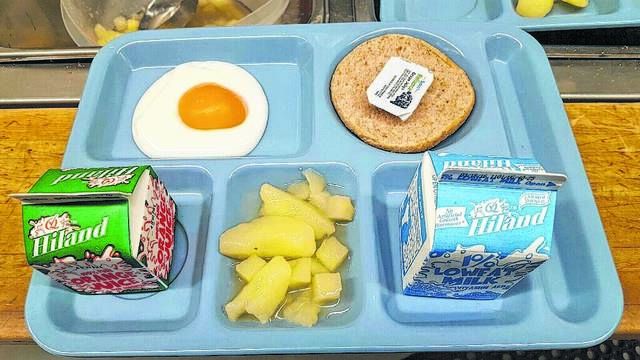Click here to subscribe today or Login.
People were rightly outraged to learn Wyoming Valley West School District sent out letters threatening to take parents to dependency court if lunch bills weren’t paid. Yes the letter went too far, something the board apologized for, but importantly, no child had been deprived of a meal or shamed with some poor-man’s rations such as a peanut butter sandwich.
Contrast that relatively small incident with President Donald Trump’s proposal to revise the rules for the federal Supplemental Nutrition Assistance Program and the potential result of a half million children suddenly losing the option of a free meal through the U.S. Department of Agriculture school lunch program. Are the national pundits who took WVW to task for seeking payments owed by about 1,000 parents equally outraged at the notion of 500,000 children losing their free school lunches?
To be clear to all of Trump’s staunch supporters, this is not criticism of his overall plan to trim SNAP spending by eliminating an option known as “broad based categorical eligibility,” which let states expand access to SNAP to those who qualify for other assistance programs.
An estimated 3.1 million nationwide would lose SNAP benefits, but often unstated is the fact that many of those could still apply for SNAP separately. The value of making them do so may be dubious, but the proposed change is defensible.
No, the issue here is the impact on children who automatically qualify for free lunches because their parents qualify for SNAP. Egregiously, that particular impact was not mentioned in the initial proposal by the Department of Agriculture.
When U.S. Rep. Bobby Scott, D-Va., raised the issue, the USDA reportedly told Scott’s staff via phone that 93 percent of the children who would be cut from free lunches would still qualify for reduced-price meals (up to 30 cents for breakfast and 40 cents for lunch). Of course, they would have to apply individually for the benefit.
Cutting fraud and abuse in the SNAP program is laudable. Attempting to do so with this particular change is questionable, but not as outlandish as critics paint it. But depriving 500,000 children of free school meals without explanation? That’s far harder to justify.
The USDA needs to give a full accounting of how many children will be affected, not just directly but through the Community Eligibility Provision of the free lunch program, which allows districts to offer free meals to all students if enough are eligible for the program. As pointed out in this space previously, the magic number is 60 percent eligible for CEP to work in a given district.
WVW will implement CEP district-wide this fall, joining three other Luzerne County districts with high rates of low-income students. From the sounds of it, this rule change could lead to hundreds, even thousands of local children suddenly not getting free lunches through the program. No one in the administration has tallied the numbers, nor explained why that’s a good idea.
And that’s an outrage.
— Times Leader





